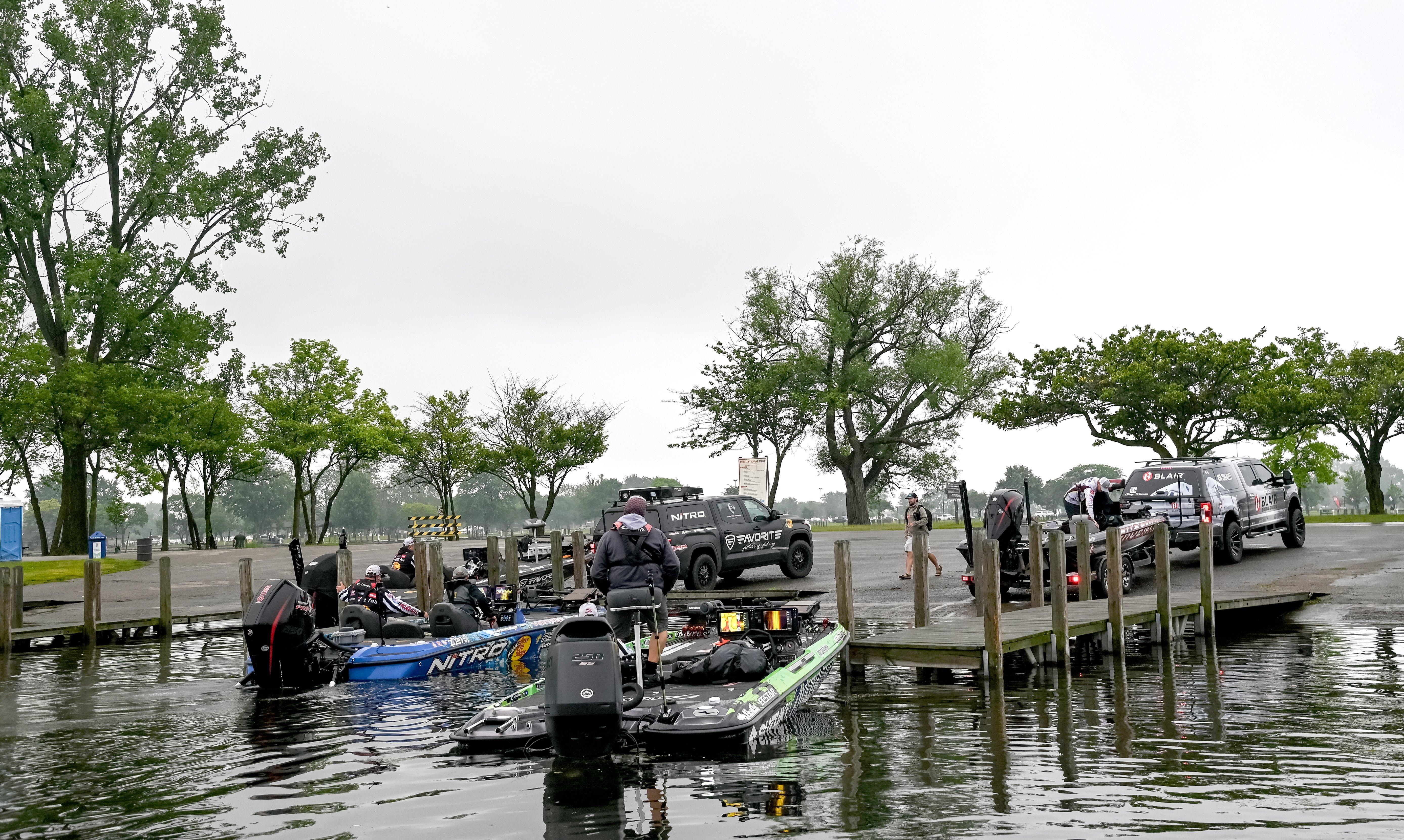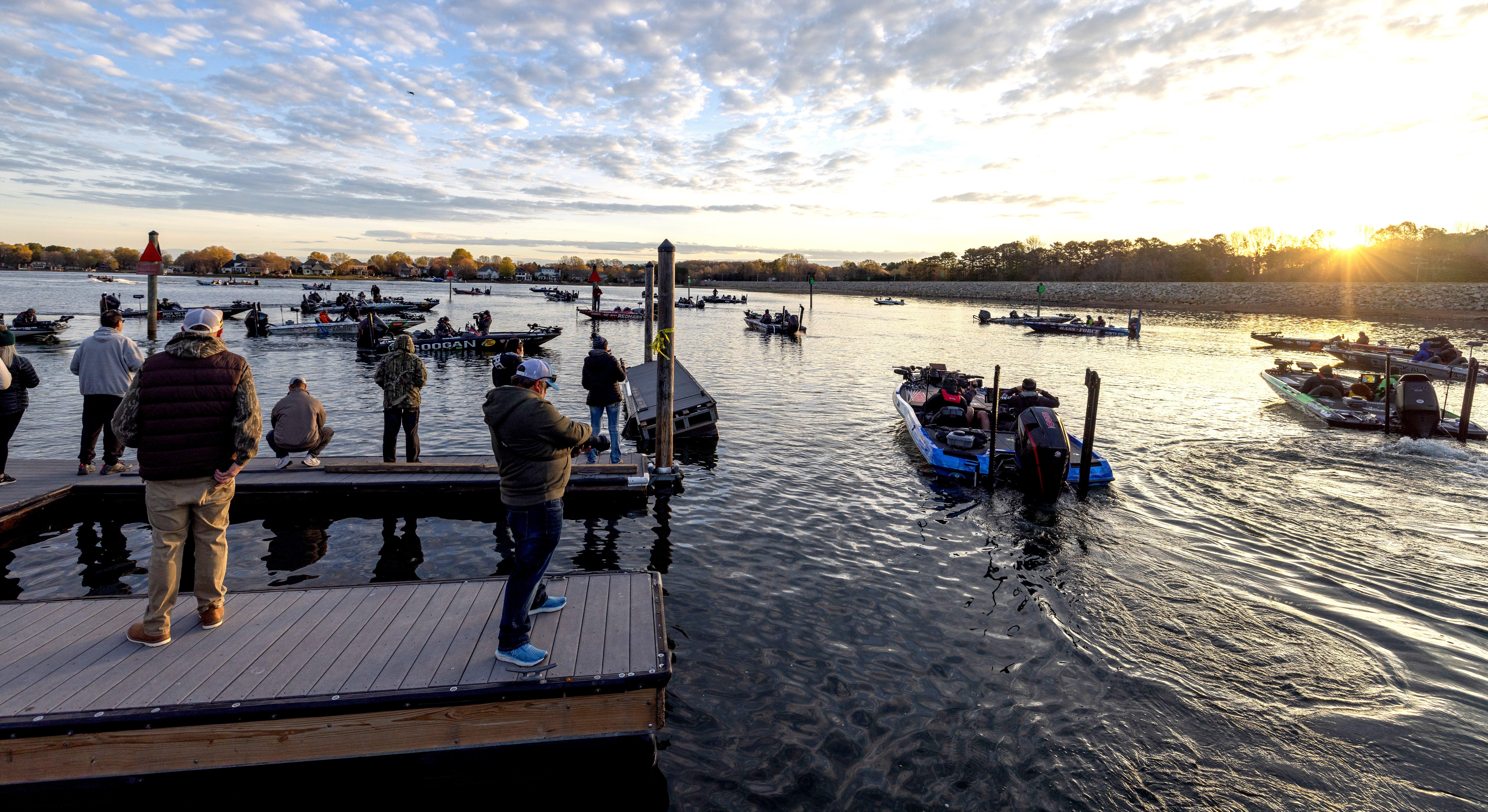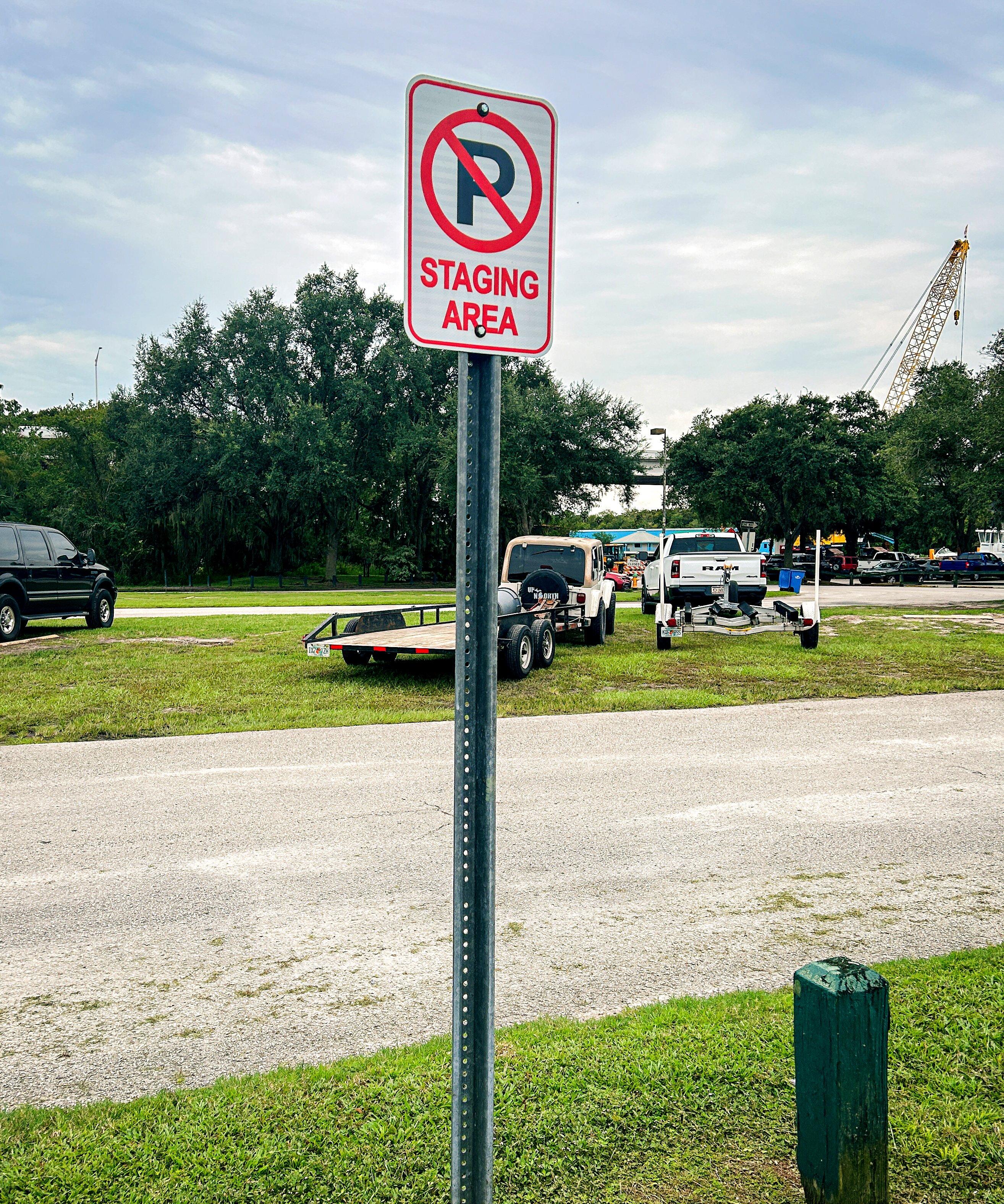If you want to make everyone in the parking lot mad, stop on the ramp to prep your boat. Otherwise, follow this advice

By following a few simple steps, anyone can launch a boat like a pro. (Photo by Realtree)
Have you ever sped to the lake in anticipation of a great day of fishing, but found yourself watching a clogged boat ramp and waiting in the parking lot instead? Most of us who’ve spent any amount of time fishing have. “Courtesy” is a seldom-used word around boat ramps. In fact, curse words are probably more common in the dialogue.
But it doesn’t have to be that way. Many professional bass tournaments will have more than a hundred boats launched, and vehicles parked, in under 30 minutes. That’s quite a contrast from the usual public launch on a Saturday morning. How do they do it? With a simple step-by-step plan, that’s how. Anyone can launch a boat like a pro and be fishing in minutes — while earning high praise from everyone else waiting to do the same. Here’s how.
1. PREP YOUR BOAT AHEAD OF TIME
We all stop at the gas station or coffee shop on the way to the lake. That’s the perfect place to get things ready. Ice down the cooler and add the drinks. Place life-jackets in an easy-to-reach area. Switch on the breakers. Power up the GPS. Begin thinking about the first action you’d normally take at the ramp. But do not remove tie-downs or the winch strap.
2. FIND A QUIET PLACE
I always like to find a spot place away from the hustle and bustle to finalize my boat prep. Under a light in the rear of the parking lot is ideal. This gives me the opportunity to go through my mental checklist without interruption. While this was vitally important during my competitive angling days, it serves an equal purpose now that I’m getting older and more forgetful. Having a nosey fisherman pressing me for early morning info just increases my chances of forgetting my phone or water jug in the truck. Instead, a few last minutes to prepare are refreshing.
Don’t Miss: Five Tactics for Hot-Weather Bass Fishing

Once you’ve launched your boat, move away from the launch area quickly. (Photo by Realtree)
3. TAKE OFF THE TIE-DOWN STRAPS
Ever forget to take your tie-down straps off and attempt to launch your boat? Veterans of this mistake recognize it quickly, pull out, and re-do. Rookies insist that the boat will float eventually, backing further and further in, winching the straps down even tighter. Worse are the yahoos who insist on this final step right at the launching zone, as if we all want to watch them take off their straps as we wait in line. It’s maddening. Take those straps off and store them before approaching the ramp.
4. DO NOT PARK ON THE RAMP
When I die, an airplane will fly above my local boat ramp trailing this sign, and it will stay in the air indefinitely. To the credit of those who don’t know the rules, the design of my common launching spot actually encourages novice boaters to stop on the ramp while prepping their rig. The signs read “No parking…staging area." To occasional boaters, this simply means “stop here and get all of your crap ready” when it is intended to mean “don’t dally here, this area is needed to pull up and launch once the ramp is clear.” In any case, once a truck and trailer pulls onto the ramp area, the next movement should be reverse, with all systems go.
5. KEEP THAT WINCH STRAP SECURE, FOR NOW
OK, laugh it up. I was one of those guys. Upon launching my new, lightweight aluminum rig, I assumed I could take the same steps as with my heavier glass bass boat. After removing the rear tie-downs and front winch strap, I pulled on the ramp, started backing down the incline… and dropped my boat onto the concrete, 10 feet from the water’s edge. Believe me, it doesn’t take much to slide a boat, especially a new boat, off a trailer. I’ve seen fiberglass bass boats (brand new glass bass boats) and even a pontoon boat hit the deck well prior to the waterline. Since then, I never remove my winch strap until my boat has water beneath it.

Find a quiet place away from the hustle and bustle to finalize your boat prep before you launch it. (Photo by Joe Balog)
6. BACK UP SLOW AND STEADY
As a trailered boat is backed into the water, and the water begins to lift the boat off of the trailer, the angle of the boat changes to a horizontal position. Sometimes, this causes the boat to bump a roller or the winch, or slide down off center. The best course of action is to avoid the old “back down and slam the brakes” method, and instead continue to back the boat in at a slow, even pace.
7. DON’T TIE UP TO THAT DOCK!
Once launched, a boat should be moved away from the launch area and secured. It’s maddening to watch boaters tie up to the dock at the launch ramp, prohibiting others from gaining access and launching their own boats. Most ramps have “courtesy” docks (that word we never hear at boat ramps) placed specifically for this reason, to get launched boats away from the launching areas. Use them. If not available, move your boat to an adjacent shoreline, even if it means a bit further walk.
TIPS FOR LAUNCHING SOLO
Launching your boat alone can be challenging, especially in bad weather conditions. The best scenario is to leave the bow-eye latched, back the rig in until it floats, and then manually launch with a shove after removing the winch strap. This move, however, requires that a boater to climb into the rig from the front of the trailer, which is not always the easiest maneuver.
Don’t Miss: Simple Crappie Ramen
Another good option is to tie off another line to the bow area of the boat, leaving sufficient slack in the rope, which is then secured to the truck or trailer. Back down the ramp until it’s safe to remove the bow strap (see above), then continue backing until the boat floats. The second line will hold the boat to the trailer or truck, allowing you to then guide the boat to the dock with the rope. It’s a simple trick, but it can be a bit dicey if the wind is blowing straight in on the ramp. That might require quick footwork, or the secondary rope can be tied to the dock for retrieval of the boat, pulling it away from the windy ramp.












